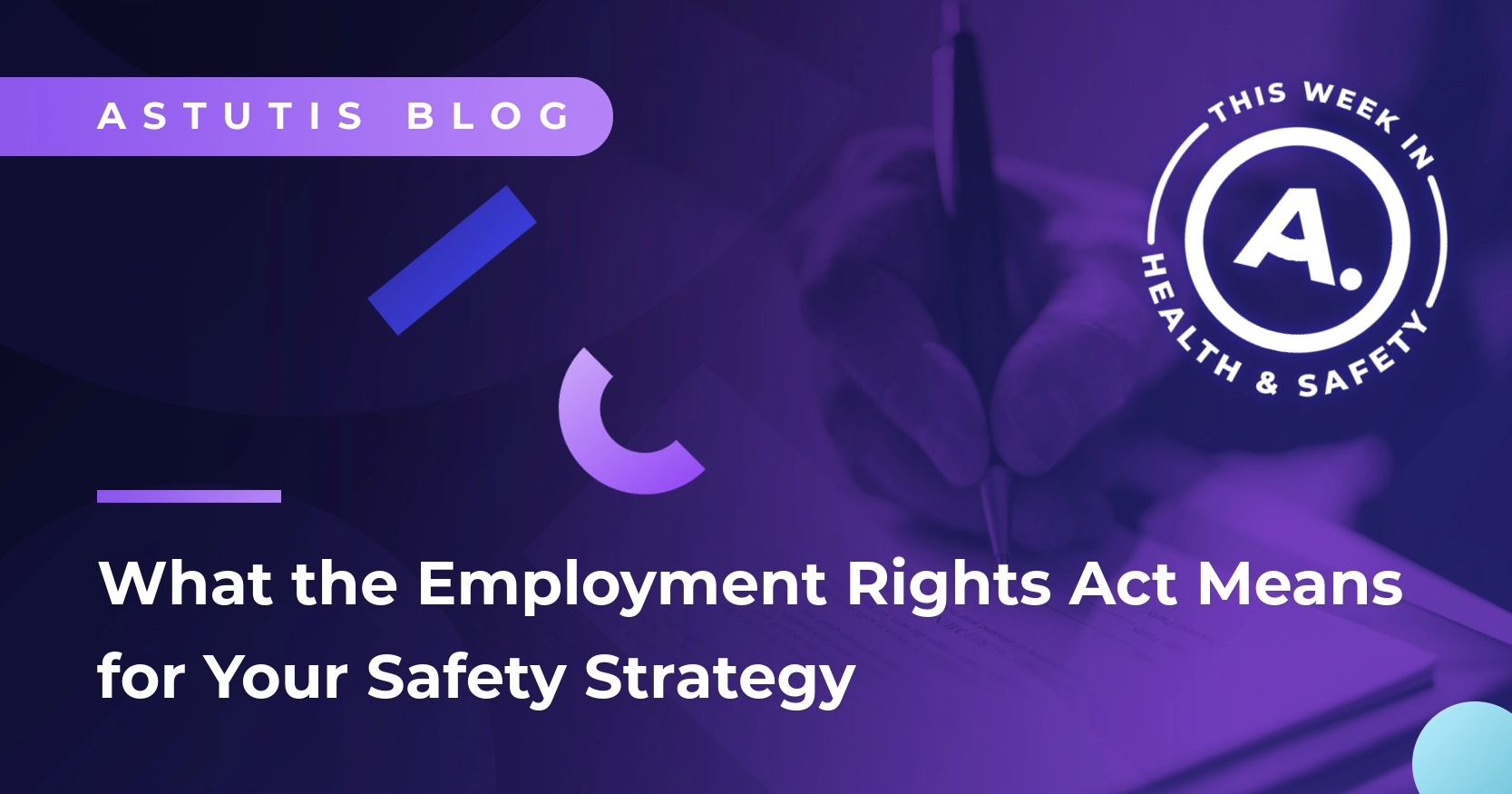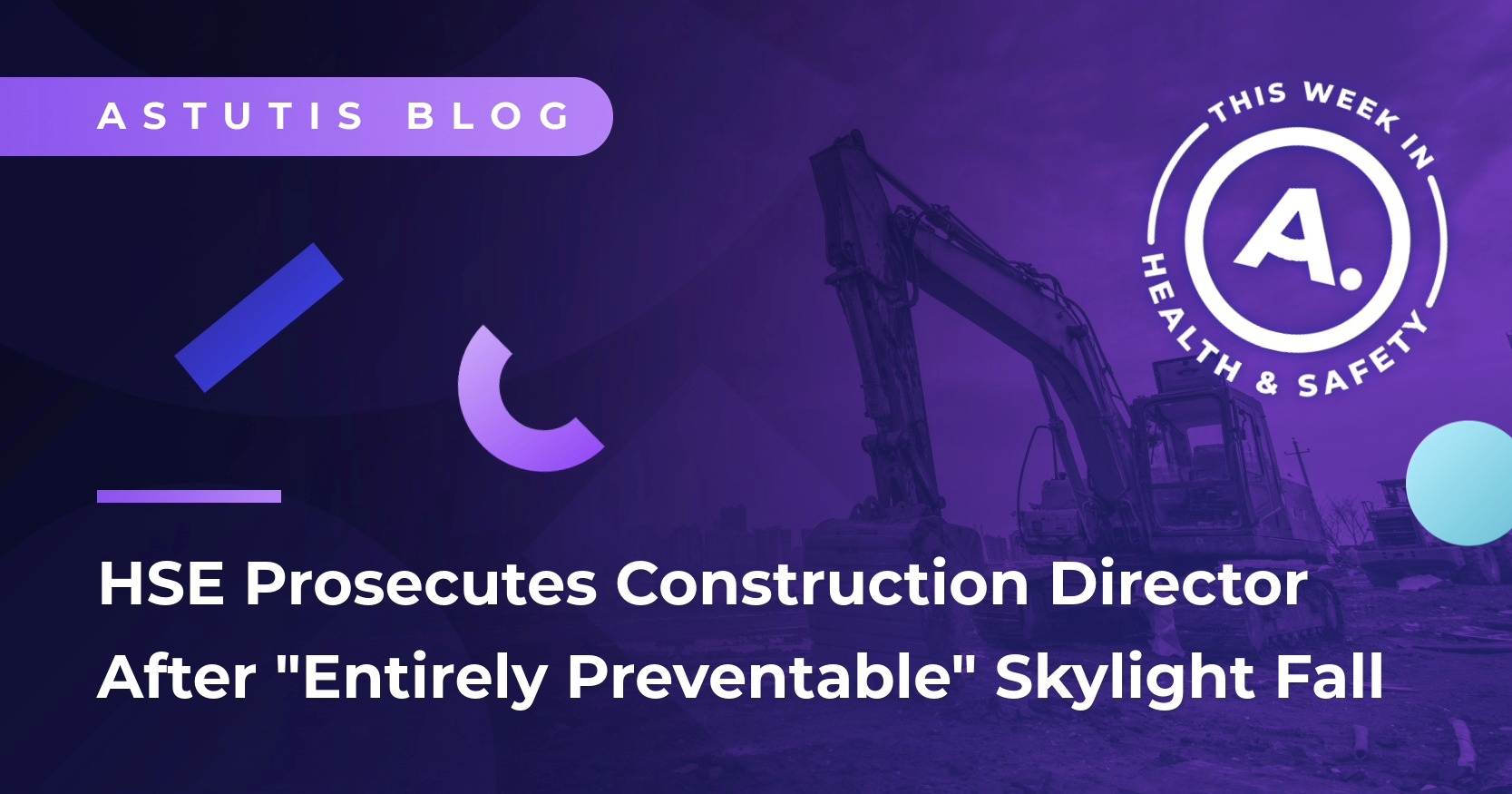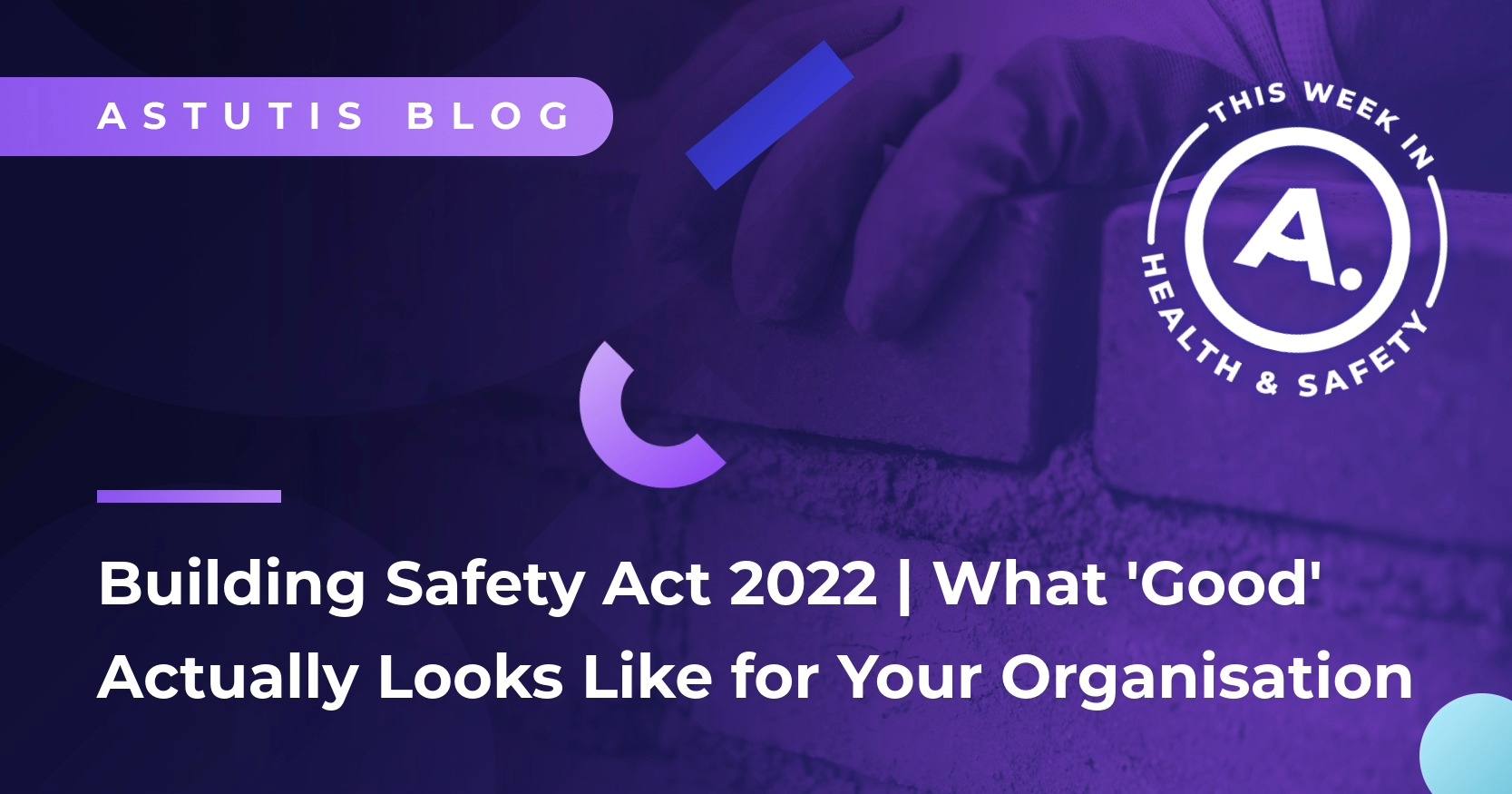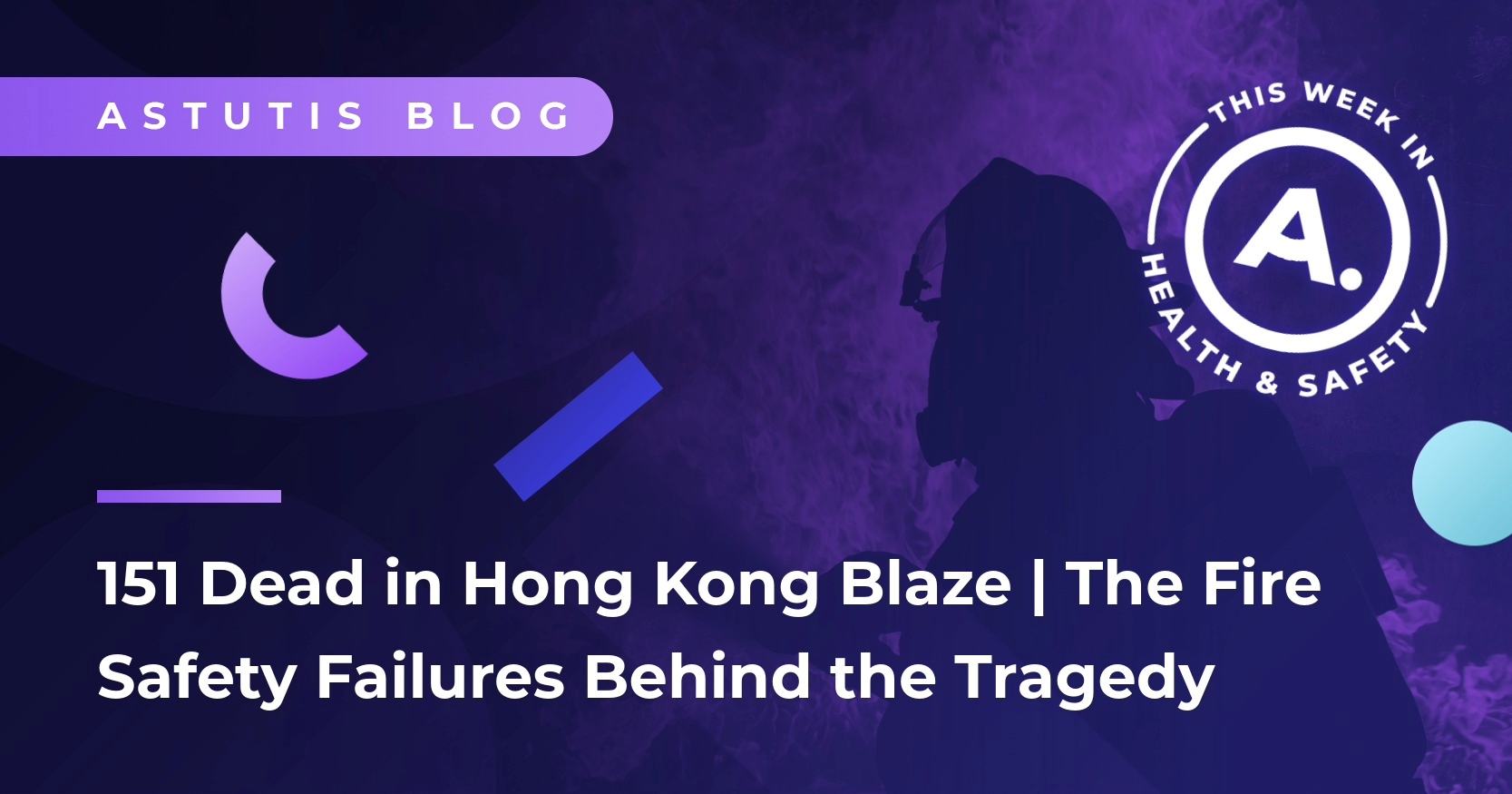Performance Indicators (KPIs) and Metrics for Health and Safety
Workplace health and safety key performance indicators are safety metrics you can use to measure progress and performance of health and safety. Just like any other area of operations, a successful company makes use of the data available to continuously improve their standards in health and safety.
A strong safety culture is achieved by following a definitive checklist of indicators to measure performance. This blog will outline several key performance indicators (KPIs) to track specific objectives, to help monitor health and safety culture and performance.
What Are Key Performance Indicators (KPIs)?
KPI's are a valuable way of monitoring lagging or leading performance. Tracking them is an integral part of any Safety Manager's role.
While lagging indicators can be used to track incidents that have occurred (past data) and assist in sourcing the root of the problem, leading indicators are more predictive by nature. They help companies address and prevent potential issues and incidents from occurring in the first place.
What Is a Key Performance Indicator (KPI) in Health and Safety?
Health and Safety KPIs are quantifiable measures used to evaluate an organisation’s performance in terms of maintaining a safe and healthy workplace. These indicators help track and assess various aspects of occupational health and safety, allowing organisations to identify areas of concern, set goals, and drive continuous improvement. They generally revolve around monitoring incidents, compliance, training, risk assessments, and other key factors related to employee well-being.
Health and Safety Leading / Lagging KPIs
Key performance indicators are typically split into two different camps, leading and lagging KPIs and they are distinctly different.
- Leading KPIs: These are proactive indicators which demonstrate what the future will look like. For health and safety, that might be safety training completion rates, frequency of safety meetings and equipment inspections, and number of near-misses reported.
- Lagging KPIs: This is an reactive indicator of what has already happened. They are a reflection of your past performance. Health and safety lagging KPIs would be incidents reported under RIDDOR, total number of accidents and incidents, emergency response time, and total costs of incidents.
Characteristics of Good Health and Safety KPIs
A good performance indicator is part of the ‘S.M.A.R.T’ Goal KPI model:
- Specific – it should be clear what is being measured
- Measurable – it should be measurable against set standards
- Achievable – target a realistic/achievable goal
- Relevant – it should offer insight into overall safety performance
- Timely – KPI’s should follow a set timeframe.
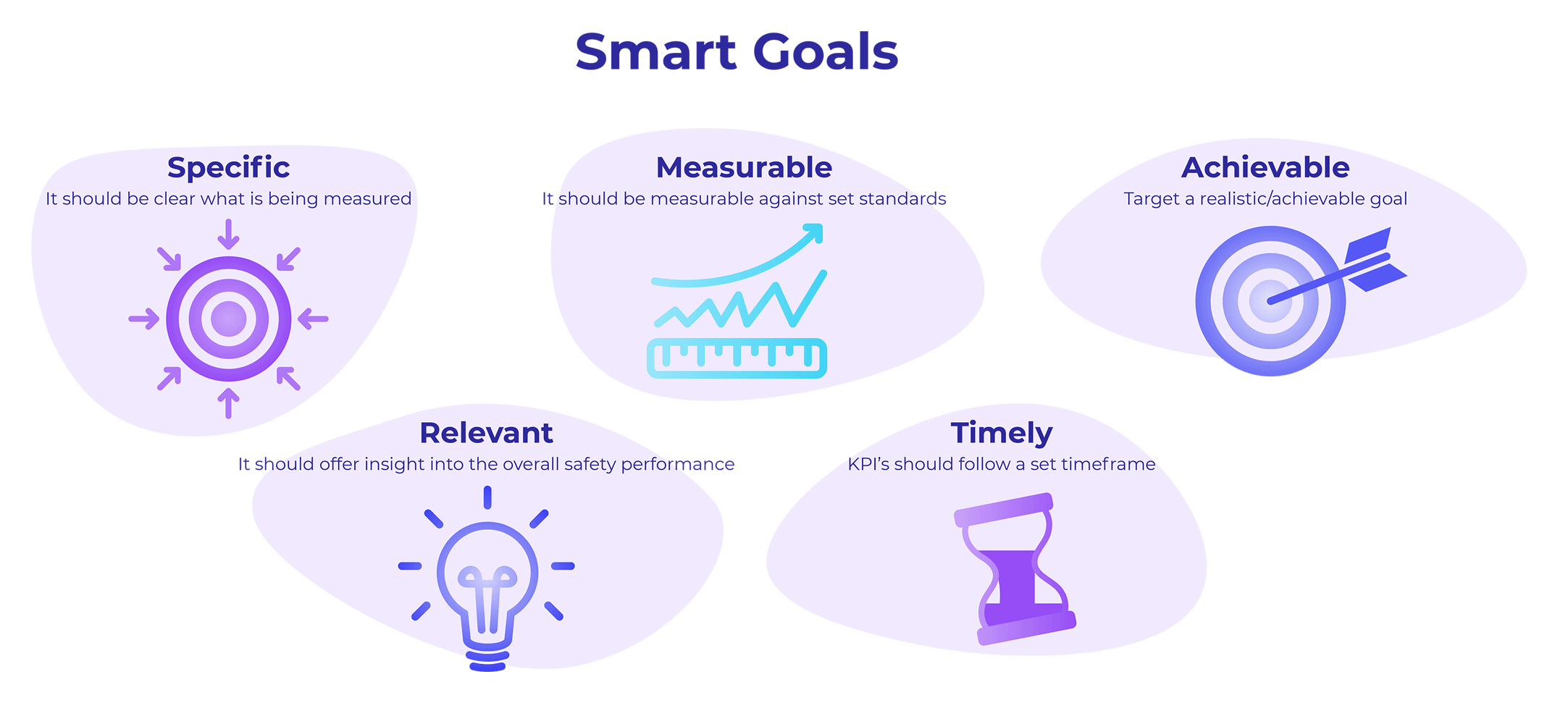
Like other business units, Health and Safety departments are no exception to tracking key safety metrics that show performance.
While you may not report any accidents, this doesn’t necessarily mean you can become complacent and assume that your safety operations are effective. Developing reliable health and safety metrics will largely depend on your goals and what you want to accomplish. Effectively measuring health and safety KPI’s will help you on your way to achieving a robust safety culture.
Key Performance Indicator (KPI) Examples for Health and Safety In the Workplace
Reported Accidents/Incidents
This first point should be taken as a given – a lagging indicator in its most obvious form. However, it really does provide the health and safety department with a high-level benchmark. It is required by law for work-related accidents resulting in a 'reportable' injury, for most UK workplaces under the Reporting of Injuries, Diseases, and Dangerous Occurrences Regulations (RIDDOR) rules.
Not only is it a legal responsibility, analysing reported accidents allows organisations to identify potential gaps and failures in their management of risks in their workplace, which will help them to put measures in place to ensure it doesn't happen again.
Reporting Near Misses
As already mentioned, a hugely misrepresented area for many organisations is the reporting of near-miss incidents. Doing your health and safety due diligence, effectively reporting near misses and reviewing the mitigating strategies go a long way to preventing potential disasters. But how will anyone know of the success in this area if it’s not being tracked?
Tracking near misses involves employee participation. Ensure the proper reporting channels are in place to give near-miss incidents the same level of priority as actual incidents. Remember to encourage employees to provide feedback without fear of punitive action actively.
Near misses are just as important as accidents themselves, and should be treated in the same manner. They are insights into how safety measures may not be correct or sufficient and can help you find weaknesses. Identifying these weaknesses and correcting them will reduce accidents in turn.
Safety Audits and Inspections
Are you keeping track of the number of audits and inspections undertaken across the business on a monthly/quarterly/annual basis?
Routine auditing of work processes is an essential part of due diligence ahead of starting a job. Keep count of completed audits and inspections and note who meets them to help you keep track of changes in standards. We have covered the main differences between Inspections and Audits previously, as businesses often struggle with differentiating between the two.
Corrective Actions
While fixing issues is advisable, it’s not enough to fix them and not report them. Identifying, fixing and tracking problems will help you to identify patterns arising within the workplace from similar incidents. It will also assist in resolving similar issues more efficiently and help hold employees accountable for the part their actions played in a given situation.
Employee Training
The relevant health and safety training for all staff, at all levels, within any organisation, is paramount to establishing good practices. The IOSH Managing Safely course is utilised by organisations across the globe to demonstrate the importance of environmental health and safety to employees and consequently increase engagement in health and safety.
In addition, ensuring that employees are aware of all your company’s procedures and policies is essential for creating a safety culture and raising engagement levels. That's why it's essential Occupational Health and Safety (OHS) professionals learn how to communicate.
Keeping track of employee training records is vital to keeping you compliant and demonstrates a proactive approach to company-wide health and safety efforts. Training certificates must not expire for many businesses, so this key safety metric cannot be overlooked.
Let’s Not Forget the ‘H’
More and more, we see the re-introduction of the ‘Health’ element of health and safety programmes, which have historically overlooked this critical area.
While seemingly a new buzzword, employee well-being is a hugely important area of any corporate health and safety strategy. But which metrics should you track here?
Consider absence rates and any changes therein. Calculate days lost due to ill-health and determine the amount paid in sick leave and temporary staffing. Presenteeism (the lost productivity from an employee working when ill and performing below standard) should also be measured.
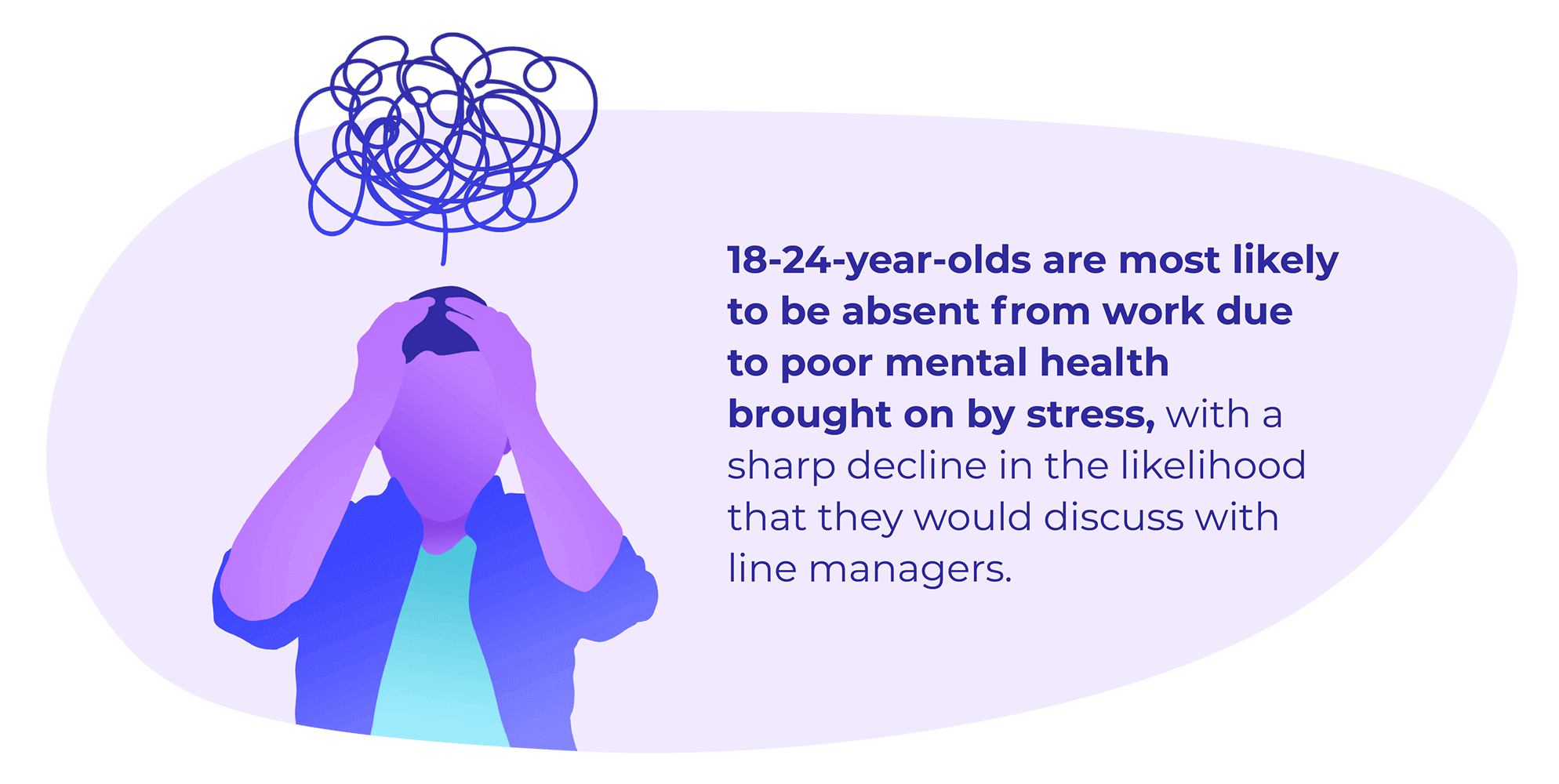
The Centre for Mental Health concluded that the cost of presenteeism to a UK business is likely to be 1.8 times as important as absenteeism. Employers should expect 1 in 6 of their workforce to be adversely affected by depression, anxiety or other mental health conditions.
Spend
No different to any other department, you will need to track your spending in health and safety on the various initiatives outlined above to report back to superiors and ultimately improve the ‘bottom line’.
There are many more KPIs you can measure in health and safety and we have developed our courses to ensure you know exactly how to track your progress as an organisation.
Risk Assessments Reviewed
This should typically be done over 12 months. If the target is high and reviews take place, there is a chance for you to consider any relevant changes that may be needed to the safe systems of work. These changes may require investment to improve working procedures, which should be tracked.
By using a rag rated system (Red, Amber and Green), senior management teams can check progress on a monthly/quarterly basis.
Statutory Compliance Measurements
Within all companies, there are usually statutory compliance checks. These must be done to make sure that Health and Safety measures are legally compliant and effective in practice. Your risk control systems should make sure that workplace precautions are in place and working correctly.
Hardware such as local exhaust ventilation systems, alarm systems and shut off valves are all controlled by a series on statutory compliance checks, often undertaken by 3rd parties. I’ve found that in practice, many of these reports take time to gather. There is a lag from the time someone visits a site, to the company receiving the information ready for action. This makes it difficult to demonstrate compliance to any regulator who may wish to inspect records.
I always recommend that if inspections are done by 3rd parties, the essential information which might render equipment unsafe to use is communicated within a very short timeframe. Clients need to then follow up quickly by agreeing actions for those who are targeted to complete solution tasks. These actions should be tracked and monitored by senior management teams.
Fore more information on the latest health and safety challenges for organisation you can read our annual learner report. We surveyed over 900 HSE professionals to see what challenges were most prevalent to them in their day-to-day work. You can download the full report via the page below.
How Can Organisations Improve Health and Safety Performance Using KPIs?
The feedback arising from key safety metrics will help in motivating leaders and is crucial to maintaining safety management systems. Measuring KPIs will allow you to engage in conversations with employees about where you can improve health and safety. This can be a difficult process to start which is why we have compiled a list of our best tips for increasing Work Involvement in Safety & Health (WISH).
For professionals looking to better understand health and safety KPIs, the NEBOSH National General Certificate provides a comprehensive guide on these principles with actionable insights for you to implement in your organisation. Head over to our course page below to find out everything you need to know about the course and try a free demo.
Related Blogs

Real Life Stories






